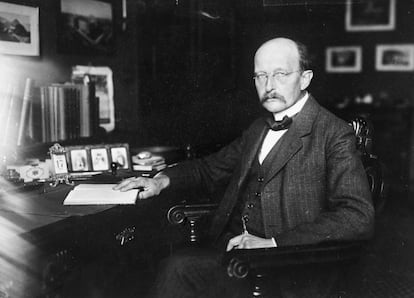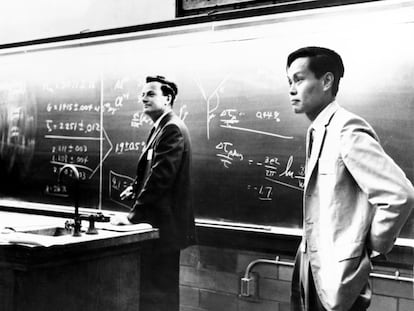The end of the world: between nuclear fission and metaphysics put into action


Carl Schmitt, the controversial German jurist, defines quantum physics as primary metaphysics ; this is an inaccurate statement made in one of his diary entries, but he used it in this way to criticize Max Planck and Werner Heisenberg as "disintegrators of the philosophy of German idealism" upheld by Hegel.
As can be deduced from reading his writings published under the title Glossarium (The Walk), Carl Schmitt transports the microscopic world to a pseudoscientific dimension where elementary particles inspire a quantum mysticism that is pure fiction. This often happens, as Carl Schmitt was not—and will not be—the only person to push the boundaries of scientific understanding regarding quantum physics, interpreting it as a fable.
If we don't want to make his mistake and want to guide ourselves through the amazing world of invisible particles and their history, there's a book that has been reissued; an extensive work that is part of a trilogy written by José Manuel Sánchez Ron in which the physicist clarifies everything related to the microscopic world. It's titled Historia de la Física Cuántica (Crítica).
In the aforementioned book, Sánchez Ron reconstructs in a simple and detailed manner the events that led to the interpretation of elementary particles in terms of observable quantities. To understand this fascinating world—where vacuum fluctuations occurring in the smallest things take us on a journey through space throughout the entire universe—Sánchez Ron goes back to the notion of the black body, introduced technically in an article published in 1860 by the Prussian physicist Gustav Kirchhoff, which was the seed of quantum mechanics.
Because, from here, Max Planck would go in search of the measure with which a black body relates to electromagnetic energy, finding the key years later, in 1900, revolutionizing physics by discovering that radiation is not emitted continuously, but appears in small, discrete, indivisible packets that he called quanta , particles responsible for the electromagnetic phenomenon. And with this idea of the quantization of energy, Einstein proposed that light could behave like a set of particles that he called "light quanta." It happened a century ago, and with it, Einstein opened the can of worms that would serve to experiment with the atomic models of Rutherford and Bohr, and lay the theoretical foundations for nuclear fission and, therefore, the atomic bomb.
The development of atomic experimentation is fascinating; a journey that allows no shortcuts and stirs up the dust and sand of the Los Alamos Desert, where the gaunt figure of a man in a hat walks through the night, consumed by the embers of his cigarette. This is Robert Oppenheimer, considered the father of the atomic bomb and whom Schmitt quotes in another of his diary entries, creating a play on words with Pappenheimer, a word that—as translator González Viñas points out—means "family background."
In this case, a metaphysical study would be necessary to explain how one of the architects of the Third Reich has influenced certain sectors of the left, and how an essential discovery for science such as quantum physics has served to destroy and threaten the world in which we live.
The Stone Axe is a section where Montero Glez , with a desire for prose, exercises his particular siege on scientific reality to demonstrate that science and art are complementary forms of knowledge.
Do you want to add another user to your subscription?
If you continue reading on this device, it will not be possible to read it on the other device.
ArrowIf you want to share your account, upgrade to Premium, so you can add another user. Each user will log in with their own email address, allowing you to personalize your experience with EL PAÍS.
Do you have a business subscription? Click here to purchase more accounts.
If you don't know who's using your account, we recommend changing your password here.
If you decide to continue sharing your account, this message will be displayed indefinitely on your device and the device of the other person using your account, affecting your reading experience. You can view the terms and conditions of the digital subscription here.

Journalist and writer. His notable novels include "Champagne Thirst," "Black Powder," and "Mermaid Flesh."
EL PAÍS







